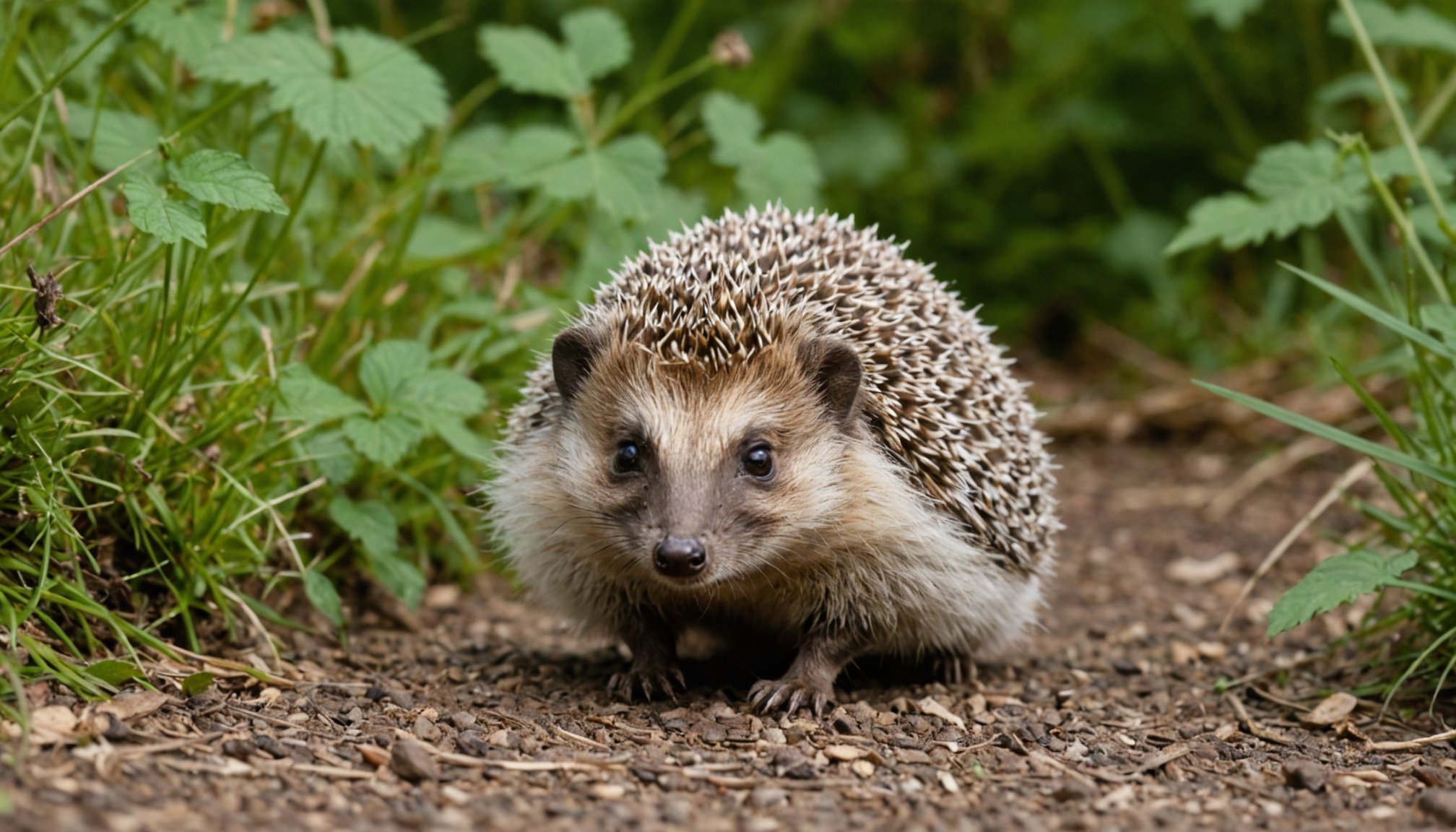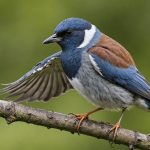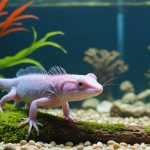Summary of Research Findings
Urban hedgehog populations in the UK have been the focus of extensive studies, aiming to understand their declining trends. The primary objective of recent UK studies is to pinpoint factors contributing to this decline, such as habitat loss and fragmentation in urban areas. By scrutinising these dynamics, researchers hope to devise effective conservation strategies.
Key discoveries unearthed by these research findings indicate a significant drop in hedgehog numbers in urban environments. High rates of road mortality, coupled with a loss of foraging grounds due to increased urban development, are pivotal factors. The research findings have also emphasised the importance of maintaining green corridors within urban landscapes. These areas are crucial, as they enable hedgehogs to move safely between fragmented habitats, reducing the adverse effects of habitat loss.
En parallèle : Enhancing urban biodiversity: the transformative role of rooftop gardens in the uk
The implications of these findings are profound for conservation strategies. Urban planning that integrates wildlife-friendly measures—such as creating safe passages across roads and preserving ample garden spaces—emerges as a necessity. Moreover, raising public awareness about the plight of urban hedgehog populations can foster community-driven conservation efforts. Such strategies not only benefit hedgehogs but also enhance biodiversity in urban spaces, creating a healthier ecosystem for all urban dwellers.
Research Methodology
Understanding the research methodology is crucial for appreciating the depth of findings in hedgehog studies. By focusing on meticulous design, precise data, and widespread sampling, researchers aim to accurately capture insights.
A voir aussi : Mastering rare bird sightings in the uk: the ultimate guide with essential tips and best practices
Study Design
The study is structured to answer key questions about hedgehog behaviour, health, and habitats comprehensively. Researchers develop hypotheses and determine the optimal approach to test them, ensuring each aspect contributes meaningfully to the overarching goals.
Data Collection Techniques
Data collection involves a combination of observation, recording tools, and participant logs. Researchers often employ motion-sensor cameras and tracking devices to monitor hedgehog activity without intrusion. Surveys and interviews with local wildlife experts might supplement this, providing additional context.
Sample Size and Locations
Sampling involves selecting individuals from diverse habitats to ensure results reflect the hedgehog population accurately. Typically, study locations include urban fringes, forests, and farmlands, each providing unique data points.
In terms of scale, sample size varies, with multiple locations helping paint a broader picture. For instance, urban samples highlight adaptation to human proximity, while forest samples could reveal natural habits. Observations are usually conducted over several months, permitting seasonal comparisons. This comprehensive approach ensures that findings are robust and applicable to various environmental contexts.
Key Statistics and Trends
Understanding hedgehog statistics sheds light on the fascinating shifts within their numbers, especially as these creatures navigate the complex environments of urban areas. Recent data indicates a troubling decline in the overall population across various regions. Researchers attribute this to factors like habitat loss and increased urbanisation, which significantly impact their natural ecology.
Within the confines of cities, the demographic patterns of hedgehogs reveal intriguing adaptations. Urban hedgehogs tend to thrive in areas with plentiful gardens and parks, utilising these green spaces as refuges. Despite facing challenges such as increased traffic and loss of natural habitats, hedgehogs adapt by altering their behaviours.
These behavioural changes are evident in how hedgehogs have adjusted their routines to cope with urban stressors; for instance, it’s noted that they increasingly favour nighttime activity, thereby reducing encounters with human foot and vehicle traffic.
As urban habitats expand, the urban ecology of hedgehogs remains a key focus for conservation efforts. This trend underscores the resilience and adaptability of hedgehogs as they continue to navigate the intricacies of city life. Using hedgehog statistics, conservationists devise strategies aimed at preserving these endearing creatures for future generations.
Impact on Hedgehog Conservation
Urban environments are dynamically influencing the survival of hedgehogs. As urbanization intensifies, hedgehog conservation faces significant challenges, which necessitate adaptation within urban ecology frameworks. Expansion of cities often leads to loss of hedgerows and greenspaces, critical for hedgehog habitats, paving way for biodiversity decline.
Effects of Urbanization
Urbanization significantly reduces suitable habitats for hedgehogs, causing fragmentation and isolation of populations. The decline in greenspaces due to construction projects and infrastructure development constraints the hedgehogs’ ability to forage and move freely. Roads, built as part of urban landscapes, pose immense threats as hedgehogs risk becoming roadkill. This phenomenon is a prominent challenge in the context of biodiversity within urban ecology.
Conservation Recommendations
Strengthening hedgehog conservation efforts in urban areas requires strategic interventions from stakeholders. Urban planners should integrate wildlife-friendly corridors in city designs, enabling hedgehogs to traverse smoothly. Installing hedgehog-friendly fencing in gardens can also aid movement. Citizens can support by maintaining greenspace connectivity and incorporating hedgehog-friendly features like log piles and native vegetation.
Role of Local Government
Local governments can significantly bolster conservation efforts by implementing policies that preserve greenspaces and foster biodiversity. Incentives for creating hedgehog-friendly gardens and community initiatives focused on raising awareness are fundamental. Encouraging responsible urban planning includes collaborations with ecologists and citizens to ensure the survival of hedgehogs in ever-expanding urban landscapes.
Implications for Urban Ecosystems
Urban ecosystems present a complex and intriguing environment for wildlife interactions and maintaining an ecological balance is paramount. Hedgehogs, for instance, play a vital role in these settings by controlling insect populations, which can otherwise inflate and disrupt local biodiversity. Their presence supports numerous other species and their absences might result in unintended ecological consequences.
As urban habitats evolve, hedgehog behavior adapts remarkably to these changes. These creatures, typically nocturnal and adaptable, find that the urban landscape provides both challenges and opportunities. Green spaces such as parks and gardens offer vital refugia amid urban sprawl, though these areas require connectivity to larger green corridors to facilitate safe hedgehog movement and gene flow.
This emphasis on biodiversity implications draws attention to the broader context of urban wildlife. Urban planners and conservationists need to consider how changes—like habitat fragmentation or pollution—may adversely affect more than just hedgehogs. A singular species’ behavior change could point to a more significant shift in the ecological equilibrium, prompting a necessary reassessment and possible redesign of urban green spaces to foster a supportive and sustainable environment for all urban wildlife.
Future Research Directions
Research into urban wildlife studies holds enormous potential for revealing intricate details of hedgehog behavior. The ever-evolving urban landscapes necessitate innovative approaches to understanding and mitigating their impact on wildlife.
Suggested Areas for Further Study
Scientists and ecologists must pinpoint specific gaps in existing research to direct future inquiries effectively. Urban environments pose unique challenges and opportunities for studying hedgehogs, particularly concerning their adaptability and survival mechanisms. Innovative research strategies could offer solutions to help hedgehogs thrive in city settings.
Longitudinal Studies on Hedgehog Populations
Implementing long-term studies on hedgehog populations is crucial for understanding their dynamics over extended periods. Such studies can illuminate trends in population growth, decline, and movement patterns. Longitudinal research will provide essential data to influence conservation strategies, making them more effective and timely.
Integrating Community Involvement in Research
Incorporating community involvement in research efforts can enhance conservation success. Engaging local residents not only promotes awareness but also harnesses valuable on-ground observations. Community-driven projects encourage stewardship, enabling researchers to gather a wealth of data while fostering a sense of responsibility towards safeguarding their natural surroundings.
Raising public interest and action in urban wildlife studies can transform conservation endeavors into collaborative triumphs, establishing hedgehogs as cherished neighbors in our urban ecosystems.











